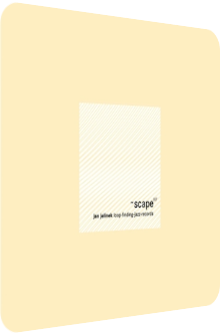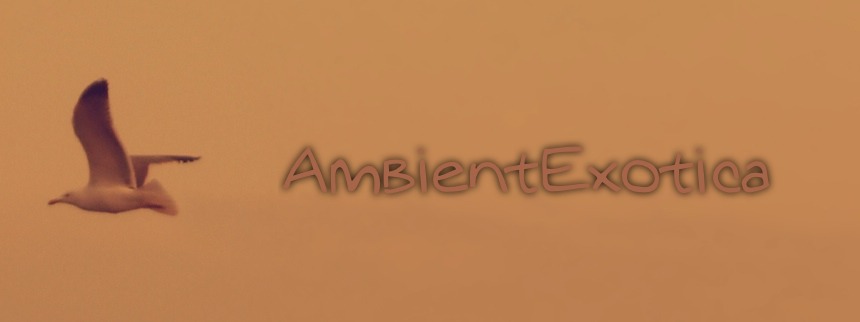
Jan Jelinek
Loop-Finding-Jazz-Records
2001
Disclosure: This is one of my ten favorite records of all time. This doesn‘t tell you anything at first, so let‘s take a look at the album title: Loop-Finding-Jazz-Records. Strikingly clear cut, yet unwontedly trivial, right? Depending on how seriously you take the premise of the title, you will either love the prospect of things to come or you will fear it tremendously, maybe because Jazz music is a huge turn-off for you or because you are on the opposite side of the spectrum and adore Jazz with all your heart, so much in fact that you don‘t want this genre to be spoiled with electronic influences and shallow loops. In a twisted way, the title describes Berlin-based electronic musician Jan Jelinek‘s approach on his album perfectly. He takes microsamples (for example the fabled inhaling of a trumpeter or a milliseconds-long brass section) and modulates them into something unrecognizable. It is exactly in this moment when the magic of Loop-Finding-Jazz-Records materializes and turns jazzy elements into mesmerizing but earthbound, sustained sculptures of aural bliss. Why should the listener care about the sample‘s origin if it is not recognizable at all? In addition, none of the 8 tracks is even loop-based in the common sense, because the loops are skillfully crafted and flow into each other, slightly shifting and always changing. Whatever the album title means to you, it exceeds your expectations and softens your fears for sure. It isn‘t an Ambient album in the classic sense, and yet it consists of incredibly layered loops of unagitated warmth; even though there is a pumping 4/4 beat on a few songs, the album never moves into club territory but is tranquilizing the listener with the available tools of dance music drum kits. And this is just one of many successful crosspurposes of the album. Let‘s go in-depth (an 80‘s aerobics credo)!
Moiré (Piano & Organ) is the first track on the album and at the same time the jazziest track with warm oscillating strings in immediate vicinity. Gorgeous clicks and cuts serve as remainders of Jelinek‘s Farben moniker which he uses for his slightly more club-compatible songs. Dubby bass drums and echoey percussive pads produce a peaceful mood. After more than 3 minutes, a hybrid of a vibraphon-esque and an organ-like synth pad sets in and evokes a relaxing Jazz atmosphere. The title (Moiré) illuminates the tactics of this instrument mash-up: two distinct instruments are merged together and their sound characteristics blend into something familiar, but entirely new. Piano & Organ explicitly explain the origin of the superimposed instruments. A great tune, both stylistically and imaginatively. Rock In The Video Age features a variety of rhythmical clicks – both minor and leading –, a 4/4 bass drum, a repetition of a short but fantastic synth burst and monotonous sustained strings. Swells of harmoniously buzzing noises and echoey intersections of intensified synth formations. This is an incredibly sedating song and each part complements the other. The following two tracks are attached to each other and form an almost 12 minute and 30 seconds super-song: They, Them and the similarly titley Them, Their. Both feature a marvelous motif. They, Them starts with bass droplets and fragile clicks before a pulsating loop sets in. The main melody is accompanied by a click concerto and consists of particularly bright and fragile 4-note strings. Whatever their original source was, they are now induce a glistening shimmer. These melodious strings carry the whole song, and the terrifically deep basslines add warmth and substance to their fragility. Them, Their is the fitting addition with the same basslines and strings that are now of a hypnotic quality and stripped down to 2 notes. Dominant clicks and rattling crackles are included again. Even though the tempo hasn‘t changed at all, the structure is even more soothing than on They, Them. Two perfect dubby songs. Ambient melts with the Clicks & Cuts genre and added Dub grooves. Magnificent.
The second half of the album introduces Tendency, which was released on Jelinek‘s Tendency EP shortly before Loop-Finding-Jazz-Records. Strikingly similar to Rock In The Video Age in its build-up, the string loops are slightly more pressing, the polyphonous melody fragments and meandering meantone whiffs are irresistibly compelling and serene. Moiré (Strings) follows next and is an honest-to-goodness Ambient track with arrhythmic bass pops, entrancing clicks and multiple layers of strings that form an analogue synthesis of elated euphoria. This song, like all the previous and following ones, works so incredibly well because Jelinek doesn‘t overstate any of the ingredients. As such, the strings encapsulate the listener but not due to their elevation or a prominent loudness level, but their highly commendable unity in structure. The last two tracks are again a couple: Do Dekor and Drift form a 10 minutes and 45 seconds long lounge atmosphere. However, I use the term lounge to describe the languidness of the rhythmical beats, the crackles and hisses and last but not least the sustained strings – I do not use it to describe the genre of the song! In the last third of Do Dekor, a quiet but noticeable one-note string is added to the main melody, adding a scintilla of tension to the mix. The song ends with rhythmical bass drums that are taken over the final song. Drift resumes the slight hint of tension in Do Dekor and puts its brightness and glimpses of wintriness into the limelight. Creaky deep pads and quavering wind noises add to the slightest hints of tension. The song ends with the melody in isolation.
Two things are most remarkable of Loop-Finding-Jazz-Records: firstly, as stated in the first paragraph, Jelinek doesn‘t focus on a jazzy approach, but merges and modulates every sound bit until the original sources are totally alienated and unrecognizable. Secondly, everything on this album is punctiliously crafted. There is no playfulness or unnecessary gimmickry attached to any song, and while Jelinek approaches the album‘s motif in a serious manner, the sparkling crackles and twinkling melodies cause a huge tranquilizing mood, preventing the music from sounding clinically clean or let alone lifeless. Though electronic by nature, all elements on this album are used to induce warmth, comfort and harmony. The importance of this album is signified by Jan Jelinek‘s real name attached to the front cover. At the time, Jelinek shuttled between his Farben and Gramm monikers, while the latter was then being dropped for good and the first one being still in use to this day. This is definitely a hallmark for Jelinek and my most favorite album by him. The concept is compelling, clear and coherent, with the Moiré songs mentioning one of Jelinek‘s assembly techniques in their titles already. If you like the sound and approach of this theme-album, consider the mentioned Tendency EP, which features two additional songs not heard on the album, both highly successful and soporific: Moiré (Guitar & Horns) and Poren (pores in English) contain another shedload of superb pops, clicks and strings, making this the perfect addition to the masterpiece Loop-Finding-Jazz-Records in my opinion. Highly recommended for its modest, unboastful approach and its thermal energy through audio waves.
Ambient Review 044: Jan Jelinek – Loop-Finding-Jazz-Records (2001). Originally published on Mar. 7, 2012 at AmbientExotica.com.
